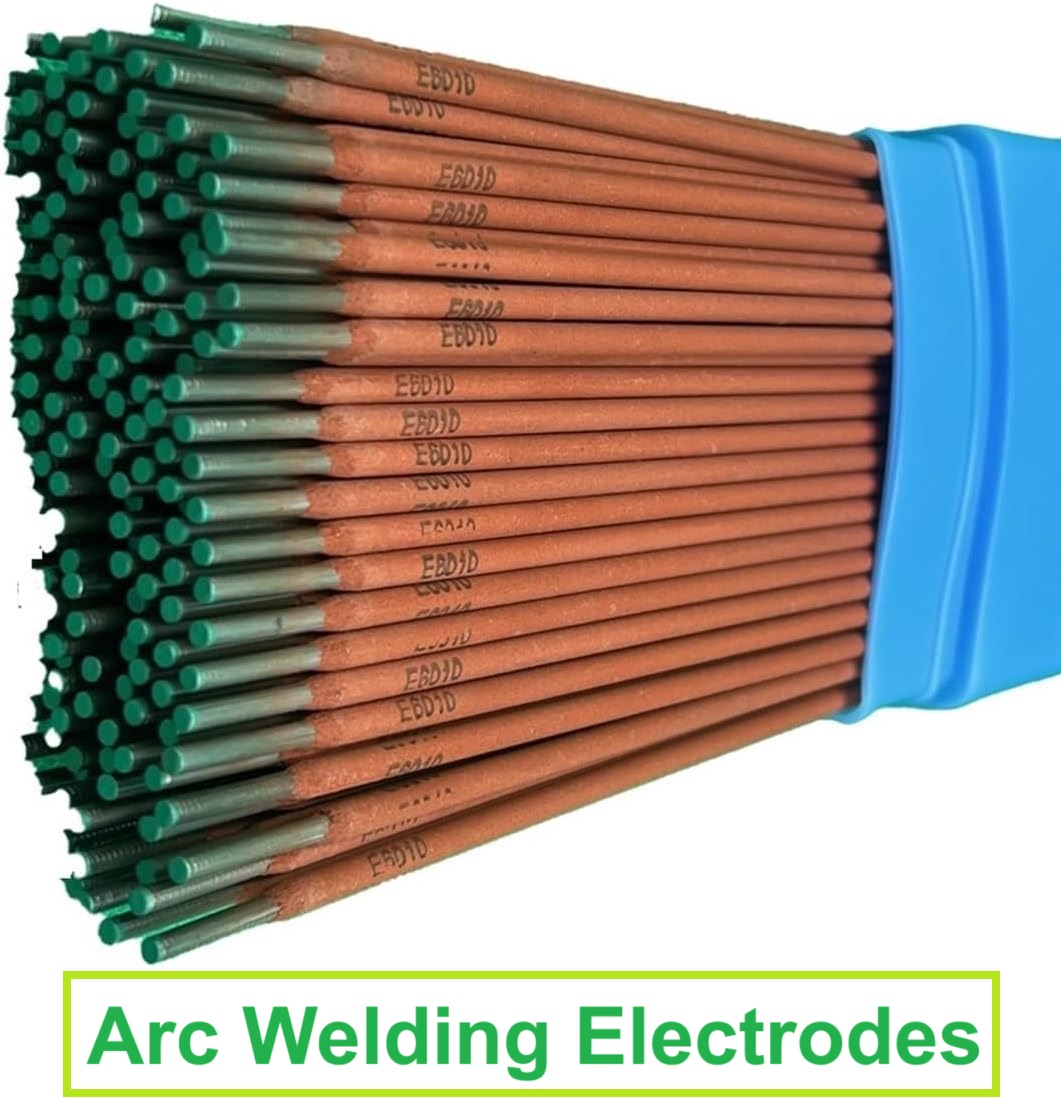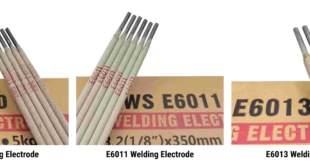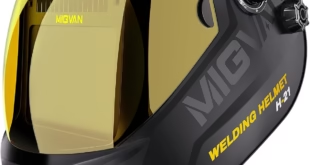SMAW Electrode Selection
Introduction
If you’ve ever marveled at the robustness of a metal structure, chances are you’ve witnessed the wonders of Shielded Metal Arc Welding (SMAW). Known for its versatility and effectiveness, SMAW is a staple in the welding world. But here’s the kicker: the success of your welding project heavily depends on selecting the right electrode. Picking the perfect electrode might seem like a daunting task, but don’t worry—I’ve got you covered. Let’s explore how to make the best choice for your SMAW needs.
Understanding SMAW Electrodes
Before we dive into the nitty-gritty of selection, let’s get a grip on what SMAW electrodes are all about. These electrodes, also known as welding rods, are essential components that conduct current to the welding arc. They are coated in flux, which stabilizes the arc and protects the molten weld from contamination.
There are several types of SMAW electrodes, but they can generally be classified into two categories:
- Cellulosic Electrodes: Known for deep penetration and fast freezing. Ideal for welding in all positions.
- Rutile and Basic Electrodes: These provide smoother welds with less spatter and are often used for specific applications requiring high-quality welds.

Factors Influencing SMAW Electrode Selection
Base Metal Type
The first factor to consider is the type of base metal you’ll be welding. Not all electrodes are created equal, and their compatibility with different metals varies. For instance, if you’re working with mild steel, electrodes like E6010 or E7018 are common choices. Stainless steel and aluminum, however, require specialized electrodes like E308L and E4043 respectively.
Matching the electrode material with the base metal is crucial to ensure a strong, durable weld. Using the wrong electrode can lead to weak joints and potential failures.
Welding Position
Welding positions can significantly impact electrode selection. The common positions are flat, horizontal, vertical, and overhead, each requiring different electrode characteristics.
- E6010: This electrode is renowned for its versatility, especially in vertical and overhead positions due to its fast-freezing slag.
- E7018: Often used in flat and horizontal positions, it provides smooth welds with excellent mechanical properties.
Choosing the right electrode for your welding position helps in achieving better control and higher-quality welds.
Thickness of Base Metal
The thickness of the base metal is another critical factor. Thicker materials require electrodes that can provide deep penetration and high heat input, while thinner materials need electrodes that offer control to prevent burn-through.
For instance, thin sheet metal may need a smaller diameter electrode with lower amperage settings, whereas thicker structural components might require a larger diameter electrode capable of handling higher currents.
Welding Current and Polarity
The type of welding current (AC or DC) and the polarity also influence electrode choice. Some electrodes are designed specifically for AC, while others work better with DC.
- AC Electrodes: Typically used for applications requiring stable arc performance on materials like aluminum.
- DC Electrodes: Preferred for their steady arc, making them suitable for a variety of metals including steel and stainless steel.
Ensuring compatibility between the electrode and the welding current is essential for achieving optimal weld quality.
Joint Design and Fit-Up
The design of the weld joint and the quality of the fit-up can also dictate electrode selection. Different joint types (butt, lap, corner, etc.) have unique requirements.
For example, a fillet weld in a lap joint might require an electrode with good penetration abilities, such as E6010. If the fit-up isn’t perfect, you may need an electrode that can bridge gaps effectively.
Matching the electrode to the joint design ensures a strong, reliable weld.
Welding Environment
Where you perform your welding—indoors or outdoors—can significantly affect electrode choice. Outdoor welding presents challenges like wind, moisture, and temperature variations.
- Indoor Welding: Offers stable conditions, allowing for a wider range of electrode choices.
- Outdoor Welding: Often requires electrodes that can handle environmental factors, like E6010 for its deep penetration and fast-freezing characteristics.
Choosing the right electrode for your welding environment ensures consistent, high-quality welds regardless of external conditions.
Special Considerations for SMAW Electrode Selection
Code and Specification Requirements
Many industries adhere to specific codes and standards that dictate the type of electrodes to be used. These codes ensure safety, quality, and performance. Organizations like the American Welding Society (AWS) provide classifications and specifications for different electrodes.
Compliance with these requirements is crucial, particularly in industries where weld integrity is critical, such as construction and aerospace.
Desired Mechanical Properties
The mechanical properties you want in the finished weld—such as tensile strength, ductility, and impact resistance—should guide your electrode selection. For example, if high tensile strength is required, an E7018 electrode would be a suitable choice.
Selecting electrodes based on the desired mechanical properties ensures that the weld will perform well under expected loads and conditions.
Cost and Availability
Balancing cost with performance is a practical consideration. High-performance electrodes may offer excellent results but can be expensive. Conversely, more affordable electrodes might not deliver the desired quality.
Finding an electrode that meets your project requirements within your budget is essential. Additionally, ensure that the electrodes you select are readily available to avoid project delays.
Popular SMAW Electrodes and Their Applications
Let’s explore some commonly used SMAW electrodes and their applications:
- E6010: Known for its deep penetration and ability to handle dirty or rusty surfaces. Ideal for pipeline welding and repair work.
- E6011: Similar to E6010 but can be used with AC or DC, making it versatile for various applications.
- E7018: Offers smooth, strong welds with good mechanical properties. Commonly used in structural steel welding.
- E308L: A stainless steel electrode perfect for welding similar alloys, providing corrosion-resistant welds.
Each electrode has specific characteristics that make it suitable for particular applications, ensuring you achieve the best results for your project.
Tips for Selecting the Right SMAW Electrode
Choosing the right electrode can be challenging, but these tips can help:
- Understand Your Project Requirements: Know the material, thickness, and joint type.
- Check Welding Position: Choose electrodes that match your welding position.
- Consider Environmental Conditions: Select electrodes suitable for indoor or outdoor use.
- Refer to Industry Standards: Ensure compliance with relevant codes and specifications.
- Balance Cost and Performance: Find an electrode that meets your needs within your budget.
Avoid common mistakes like using incompatible electrodes or neglecting environmental factors. Always read the manufacturer’s guidelines for the best results.
Maintaining Electrode Quality
Proper storage and handling of electrodes are essential to maintain their quality:
- Storage: Keep electrodes in a dry, cool place to prevent moisture absorption, which can lead to weld defects.
- Handling: Handle electrodes carefully to avoid damaging the flux coating.
Regularly inspect electrodes for signs of damage or contamination and follow recommended storage practices to ensure their longevity.
FAQs
What is the most versatile SMAW electrode?
The E6010 electrode is highly versatile, suitable for multiple positions and various types of metals.
Can I use the same electrode for different base metals?
While some electrodes like E6010 and E6011 can be used for different metals, it’s essential to check compatibility to ensure quality welds.
How does electrode coating impact welding performance?
Electrode coating affects arc stability, slag formation, and weld quality. Different coatings are designed for specific applications and welding conditions.
What are the signs of using an incorrect electrode?
Signs include poor weld appearance, excessive spatter, lack of penetration, and weld defects like cracking or porosity.
How should I store electrodes to maintain their quality?
Store electrodes in a dry, cool place, preferably in their original packaging or a sealed container, to prevent moisture absorption and contamination.
Conclusion
Selecting the right SMAW electrode is a multifaceted process that requires careful consideration of various factors such as base metal type, welding position, thickness, current, joint design, and environment. By understanding these factors and following best practices, you can achieve high-quality, durable welds that meet your project requirements.
 Welding of Welders All about Welding and Welders
Welding of Welders All about Welding and Welders



